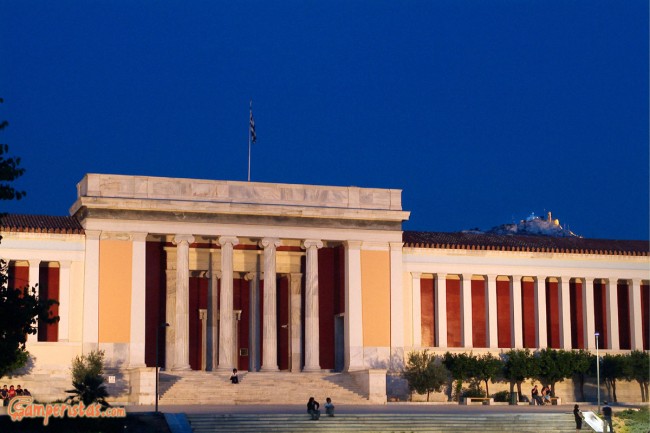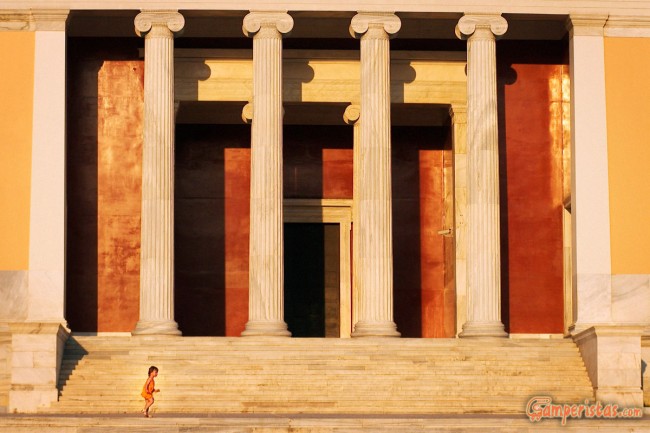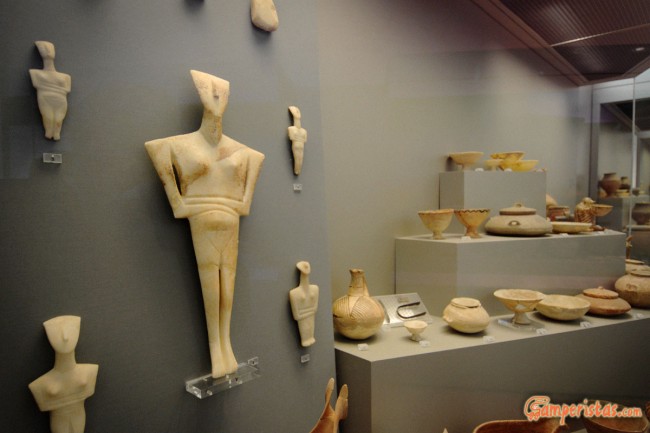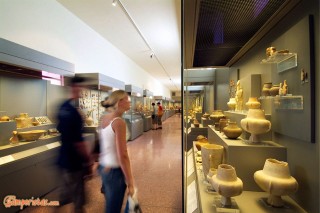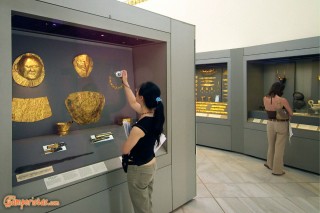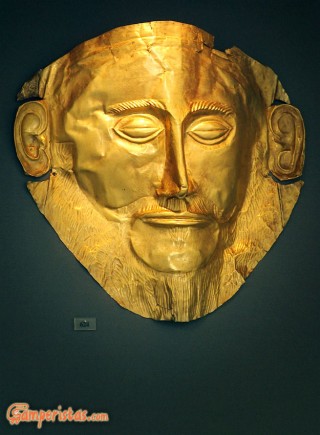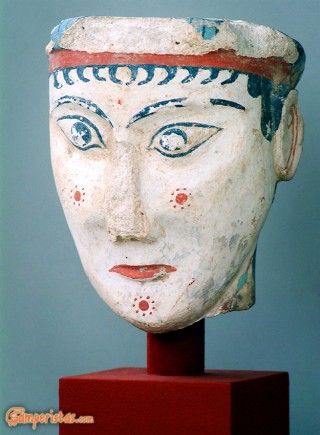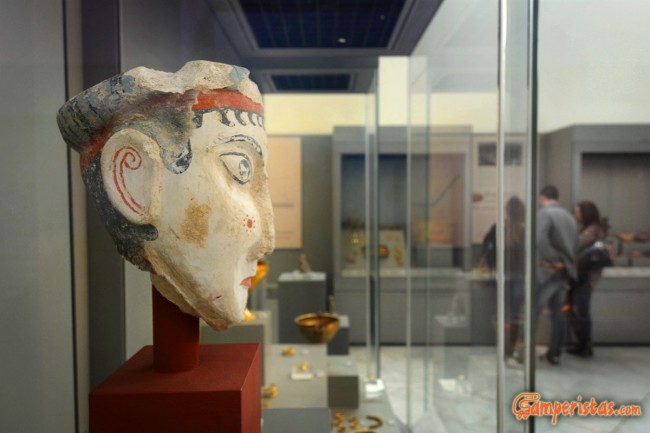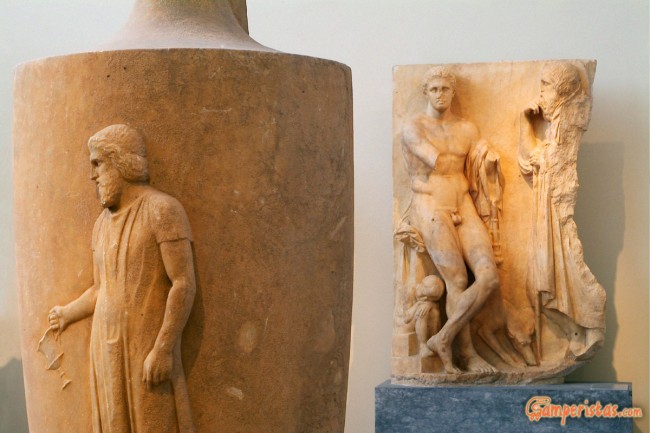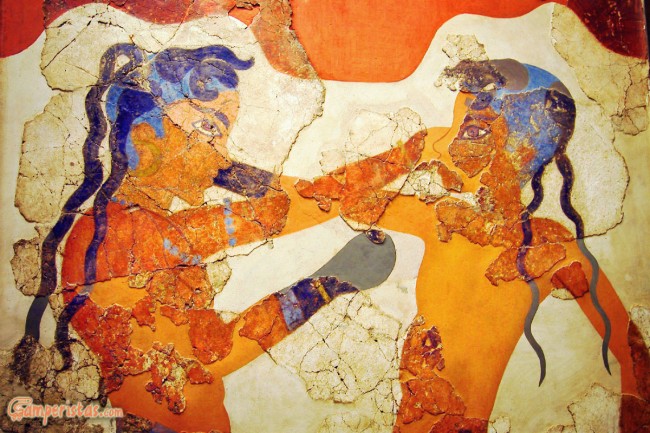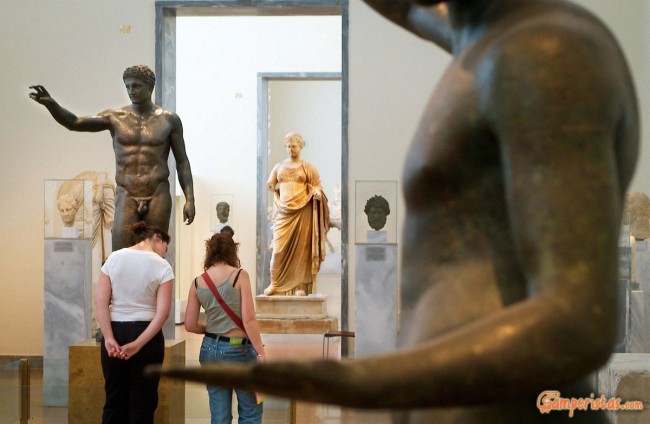
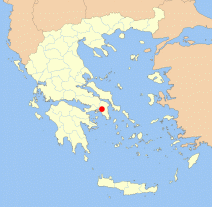 If your time is limited or if you plan to visit only one museum during your stay in Athens, it’s quite probable that this once-venerable museum will not be your first choice. It would be a pity, though, to miss it. It’s maybe old-fashioned (particularly if compared with the avant-garde New Acropolis museum) but it remains one of the most important archaeological museums of the world, holding the crème de la crème of ancient Greek artifacts.
If your time is limited or if you plan to visit only one museum during your stay in Athens, it’s quite probable that this once-venerable museum will not be your first choice. It would be a pity, though, to miss it. It’s maybe old-fashioned (particularly if compared with the avant-garde New Acropolis museum) but it remains one of the most important archaeological museums of the world, holding the crème de la crème of ancient Greek artifacts.
[sam id=”7″]
Before the opening of the New Acropolis Museum in 2009, the National Archaeological Museum of Athens was the flagship of all Greek museums and an obligatory stop for anyone who wanted to see the masterpieces of the Greek ancient civilization from the Prehistoric era to the Roman Times.
What has changed? In the strict sense, nothing; it still host the same prestigious exhibits (11.000!) but the visitors seem to prefer the brand new one, located in a more convenient spot right at the foot of Acropolis. According to the recent data for the first semester of 2014, the National Archaeological Museum attracted 263.000 visitors and the New Museum of Acropolis 767.000. The trend is evident, but don’t let this discourage you. The Archaeological Museum is more than worth a visit.
The Museum (in Greek “Ethniko Archeologiko Mousio”) is at 44, 28th October str., just a few hundred meters from Omonia square and metro station. It’s very central although it’s not exactly on the tourist trail. Have in mind that 28th October is the official name of the street; pretty much everyone continues to use the former name, Patission, which can sometimes create confusion if for example you ask for directions or with maps and navigators.
Admission fee is € 7 for adults (€ 3 reduced) and is free for children under 18 and for students holding their University ID. From November till March the museum is open on Mondays from 13.00 to 20.00 and all the other days from 9.00 to 16.00. For the spring/ summer timetable check out the museum’s website.
It is the biggest museum of Greece so be prepared to spend at least 2-3 hours just wandering through the galleries. If you want to dig deeper, to read the labels and to take your time to admire the beauty and the harmony, it will be the double.
Above, you see two of the most famous exhibits from the treasure of Mycenae (the Agamemnon golden mask and the painted plaster female head of 13c B.C).
Below, it is the unique monumental Dipylon amphora with geometrical patterns, 750 B.C.)
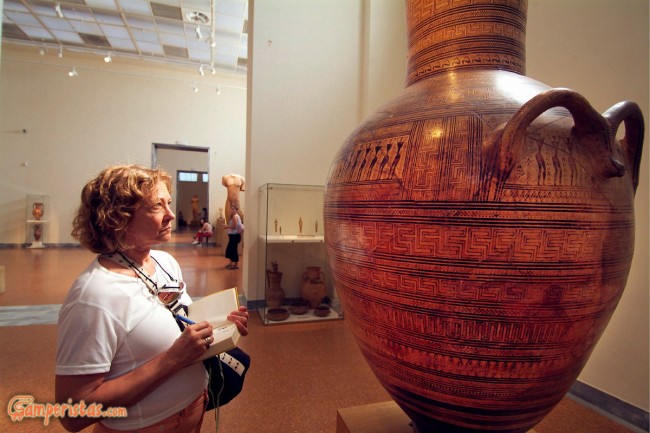
Here are two of the most important statues of the Museum: the Aphrodite, Pan and Eros complex from Delo (as you see the goddess of Love is represented in a realistic, sensual way) and the bronze statue of Poseidon or according others of Zeus found in the sea at Artemision cape, famous for its anatomical realism.
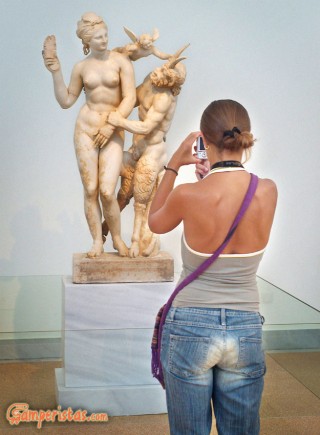
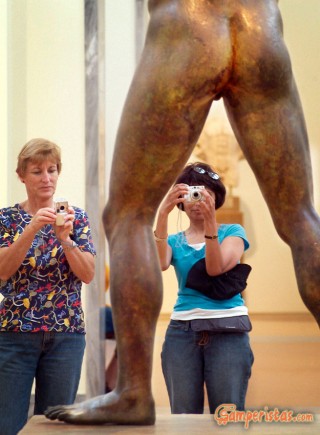
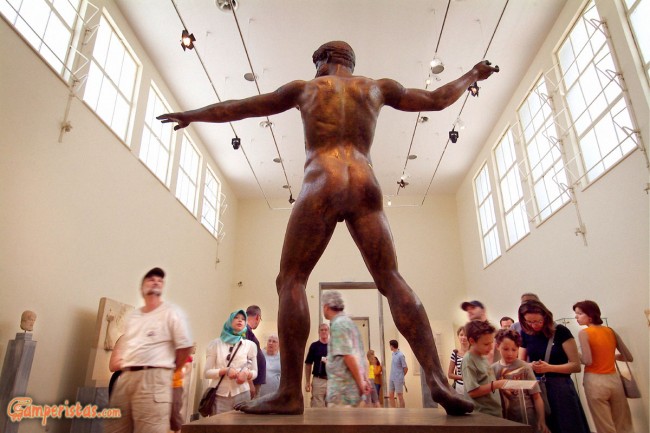
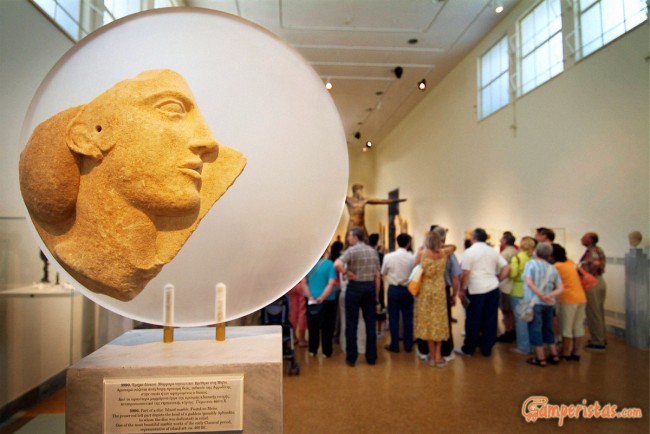
Below is the famous “Jokey of Artemision” (150 B.C.), a bronze statue found in a shipwreck at Artemision cape. No wonder why it attracts fine art students…
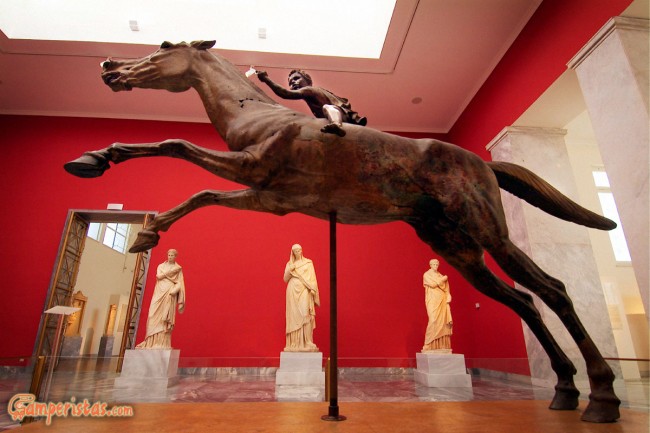
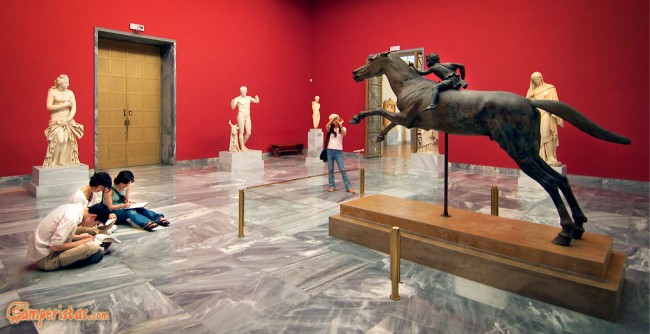
The precious Antikythera mechanism (1st c. B.C.), the first known portable computer, is exhibited in a separate hall since 2012; along with the fragments the visitor can see various replicas, learn about τhe functions of this fist believed astronomical calculator and follow the traces of its discovery. The study of this mysterious device started one century ago and still continues fascinating the scientific world.
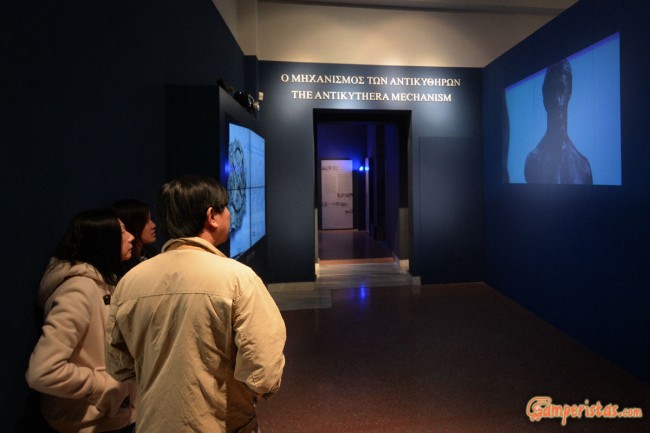
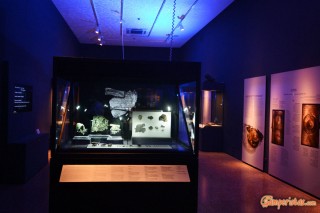
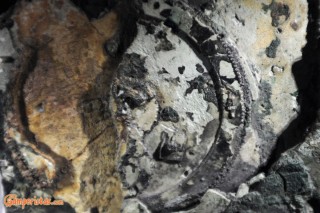
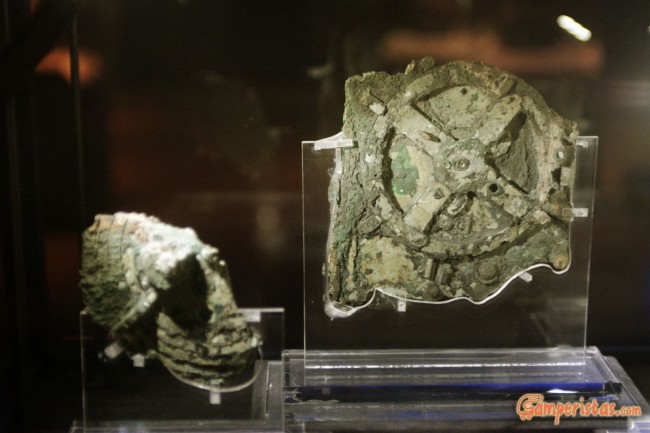
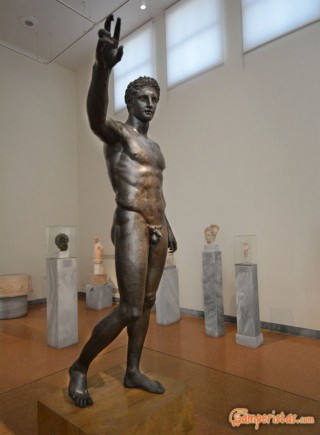 The museum hosts the impressive frescoes from Akrotiri (Thera), 16th c. B.C. . Above is the wall painting known as “the boxers” depicting two young boys during a ritual performance. The Akrotiri hall was opened in 2005.
The museum hosts the impressive frescoes from Akrotiri (Thera), 16th c. B.C. . Above is the wall painting known as “the boxers” depicting two young boys during a ritual performance. The Akrotiri hall was opened in 2005.
The Ephebe of Antikythera (left and below) is another ‘super-star’ of the museum. The world famous bronze statue of 330 B.C. is considered one of the most beautiful sculptures of the Greek Ancient world. It represents either Perseus carrying the head of Medusa or Paris holding the Apple of Discord. In both cases he is marvelous…
To conclude your visit don’t forget to pass by the Museum Shop; it is one of the biggest in Greece and you can find interesting replicas of some artifacts along with new items.
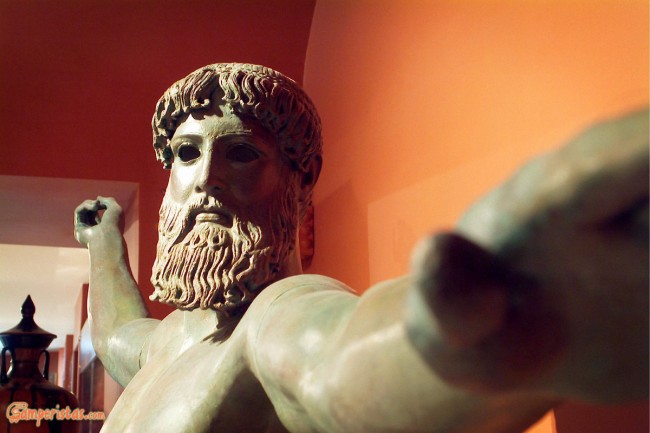
[sam id=”7″]

